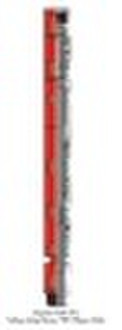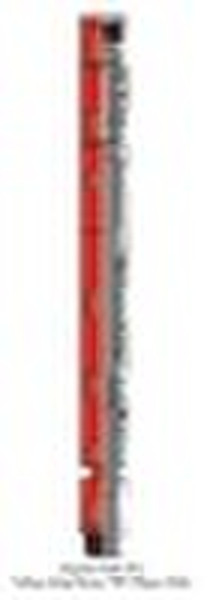Rupture Disk (RD) Tubing String Testing (TST) Bypa

Elaine Li
联系人姓名
基本信息
| 出生地 | China (Mainland) |
|---|
The rupture disk (RD) tubing string testing (TST) bypass valve is a weight activated, normally open valve. It is runing in the workstring to prevent pressure buildup below the tester valve while stinging into a production type packer or while setting a retrievable packerduring a well test. It is a one shot ty tool that must be removed from the well to re-open it. Features and Benefits The tool is composed of three major sections: The bypass port section consists ofan upper adapter, ported mandrel, and ported nipple. The upperadapter contains two 1/4 NPT ports.Pressure applied to the lower portshifts the ported mandrel up. Pressure applied to the upper portshifts the ported mandrel down. This allows the tool to be pressuretested at the surface prior to going in the well. The metering section contains anair chamber and an oil chamber separated by a metering cartridge. Once the tool has been triggered, the operating mandrel in the section moves up, closing the bypass ports.This section provides a 10 to20-minute delay, depending upon the hydrostatic pressure, in the closure of the ports. The trigger section is composed of a rupture disk nipple, splined housing, floating piston, splined mandrel, and lower adapter. The splined mandrel, floating piston, and splined housing form a hydraulic ram whenever weight isapplied. The resultant pressure istransmitted to a rupture disk in the rupture disk nipple. This preventsany upward movement of thesplined mandrel until the correctweight is applied to shear the rupture disk.
交货条款及包装
Packaging Detail: Iron or woodern carton Delivery Detail: as per actual qty
端口: China Port or as per requirement
付款条款
Letter of credit
Telegraphic transfer
-
支付方式
我们接受:









